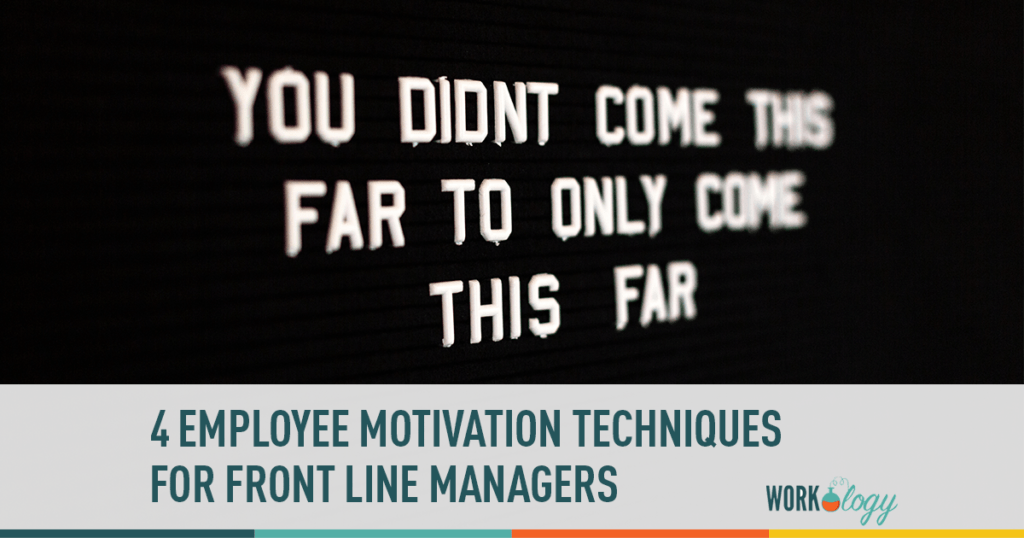Given the recent improvements in our economy and thus our job market, it is becoming increasingly harder to attract high quality employees as well as retain existing talent. Before, when the job market was not as good, there was less places for your employees to leave and go and thus it seemed that motivation was not nearly as important. But here we are where that has changed. Motivation is extremely important to retaining employees. Employees who are motivated are more likely to be happy with and loyal to their current employer.
Types of Employee Motivation
When it comes to motivating your employees there are a lot of different ways to go about it. Most of those ways fall into one of two categories, suboptimal and optimal. Any motivation is good motivation, right? Nope, wrong. Suboptimal motivation can be equivocated to instant gratification. While it may seem to work instantaneously, in the long term, these types of motivation can hurt more than they help.
Optimal motivation types are the ones you want to focus on. These are the long term types of motivations that lead employees to develop behaviors that will benefit themselves and the company they work for. These types give them a sense of identity and value within their organization that lead to a higher caliber work product and loyalty to their company, meaning they are far less likely to leave for greener pastures.
Utilizing Your Frontline Managers
To have the most success in motivating your frontline employees, you must utilize your frontline managers. Because they have the most exposure to these employees, you must properly prepare them to learn about the values and motivations their employees have and develop quality personal relationships that can then capitalize on those things. Here are four tactics that I have found effective for improving a manager’s relationships with his/her employees .
Consistent Conversations
The importance of communication between a manager and their employees is of extreme importance. We aren’t talking elongated, one on one interactions but more just consistent regular check-ins, updates and feedback. It must be consistent and ongoing.
One common and successful approach to this is the utilization of floor time. Managers will actually schedule themselves time on the floor, walking around and interacting with their staff. Being visible and present allows them to be more approachable and allows for genuine relationships to develop. Conversations with their employees don’t have to be lengthy or planned in order to be effective as long as they are intentional, focused on the employee and building a personal relationship with them.
Prioritize Relationships
Managers are busy and already have a lot on their plate so it is important to prioritize conversations and relationship efforts. Again, this doesn’t have to take a lot of time. Planning to interact with employees here and there for even minutes at a time can be beneficial. Make sure to keep it personal, it doesn’t have to be all business. It is important for the manager to actively listen. In getting to know employees, they will inadvertently share just what it is that motivates them. From there, determining optimal motivation will be easier. When you take a personal or individualized approach to motivation, it is likely to be more effective.
Personalizing Your Program
The more efforts made by management to learn about their employees and personalize the relationships they have with them the more beneficial those relationships will be. Personalization doesn’t have to be time consuming and high effort. While it should be intentional, building relationships and personalizing programs is well worth the effort. Using the technology your employees use to develop the relationships and trust building efforts can be as easy (and not time consuming) as sending a text message or encouragement or making quick call between meetings to check in. Whatever it is, that personal touch will take you far, reflecting well not only on the manager but the organization as a whole.
Increasing Touch Points with Technology
For managers to be most effective, they must also get creative. They often have to take measures that resonate more with employees than suit their own preferences. Sometimes that include the use of multiple technological channels to communicate, give feedback or monitor progress. Sometimes it takes trial and error and sometimes it takes just really paying attention to the technology employees are using.
Managers can take advantage of machine learning and other available technologies. It doesn’t even need to necessarily be something new. you can use technology like email to share important instructions or just shoot an employee a quick note.
Communication and personalization are two of the most important parts of optimal motivation. Rewards here and there can be good but it is more important to put time and resources into the development of relationships between managers and employees. When both parties are more personally invested it will have a greater positive impact on your company.








